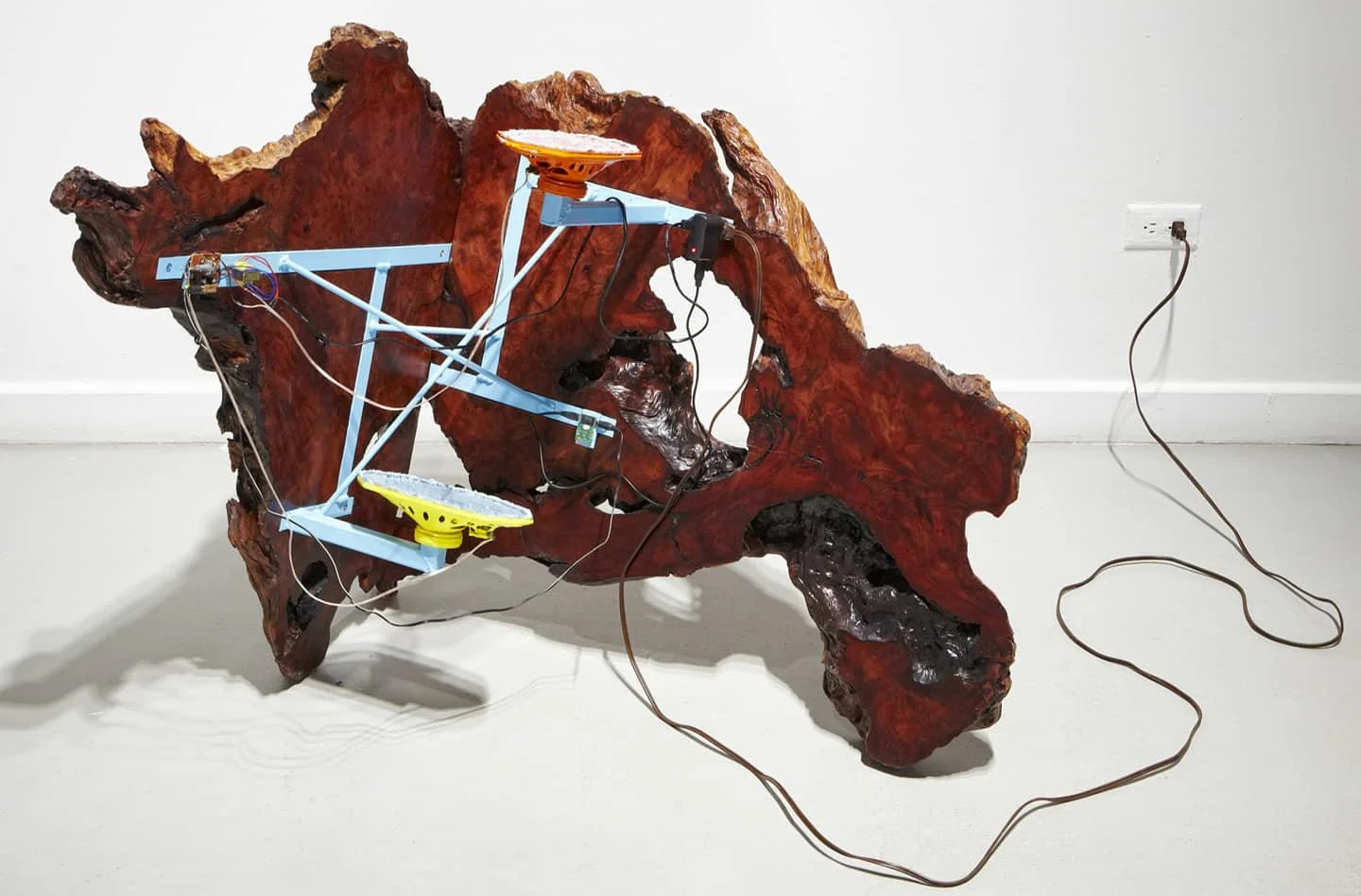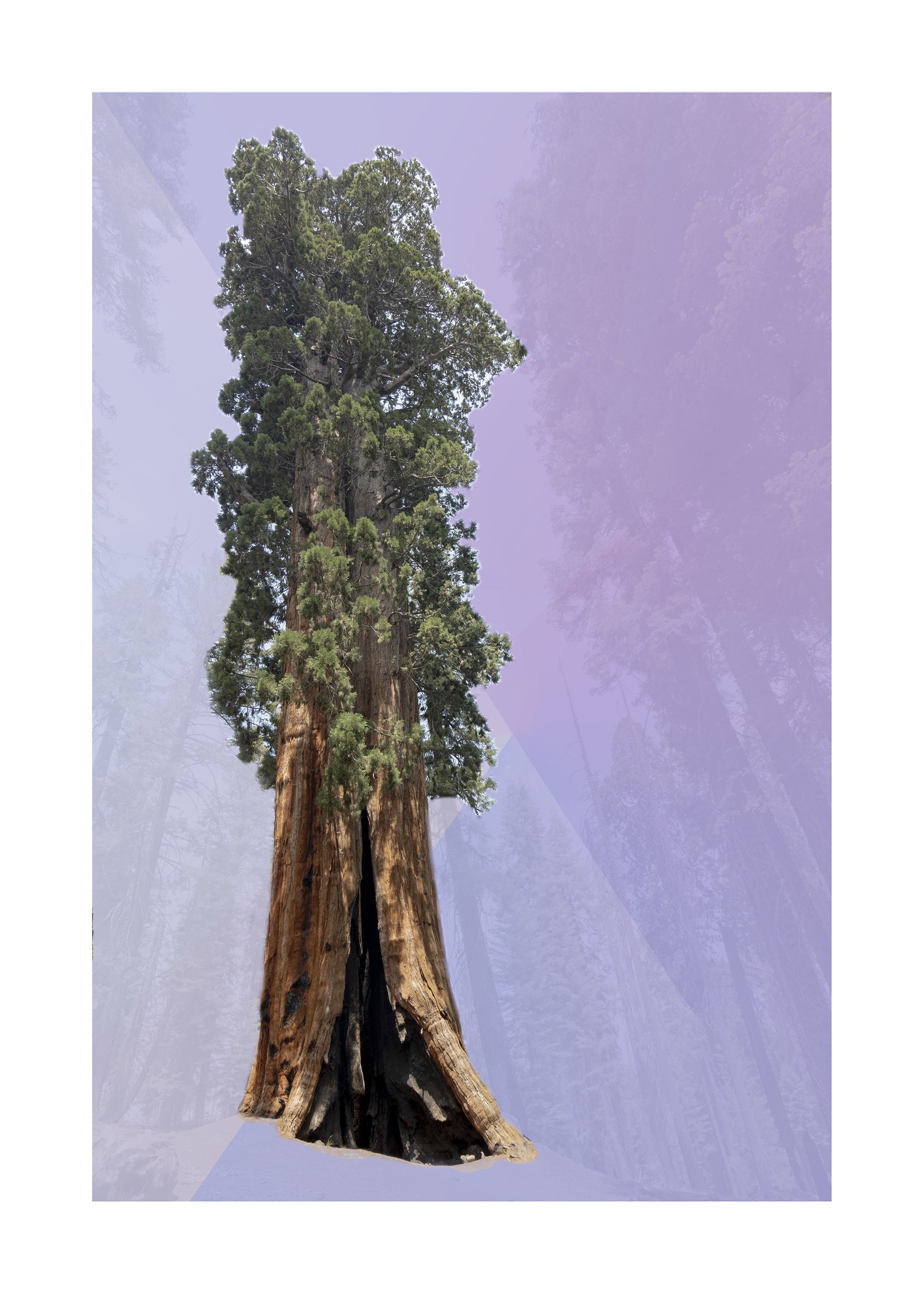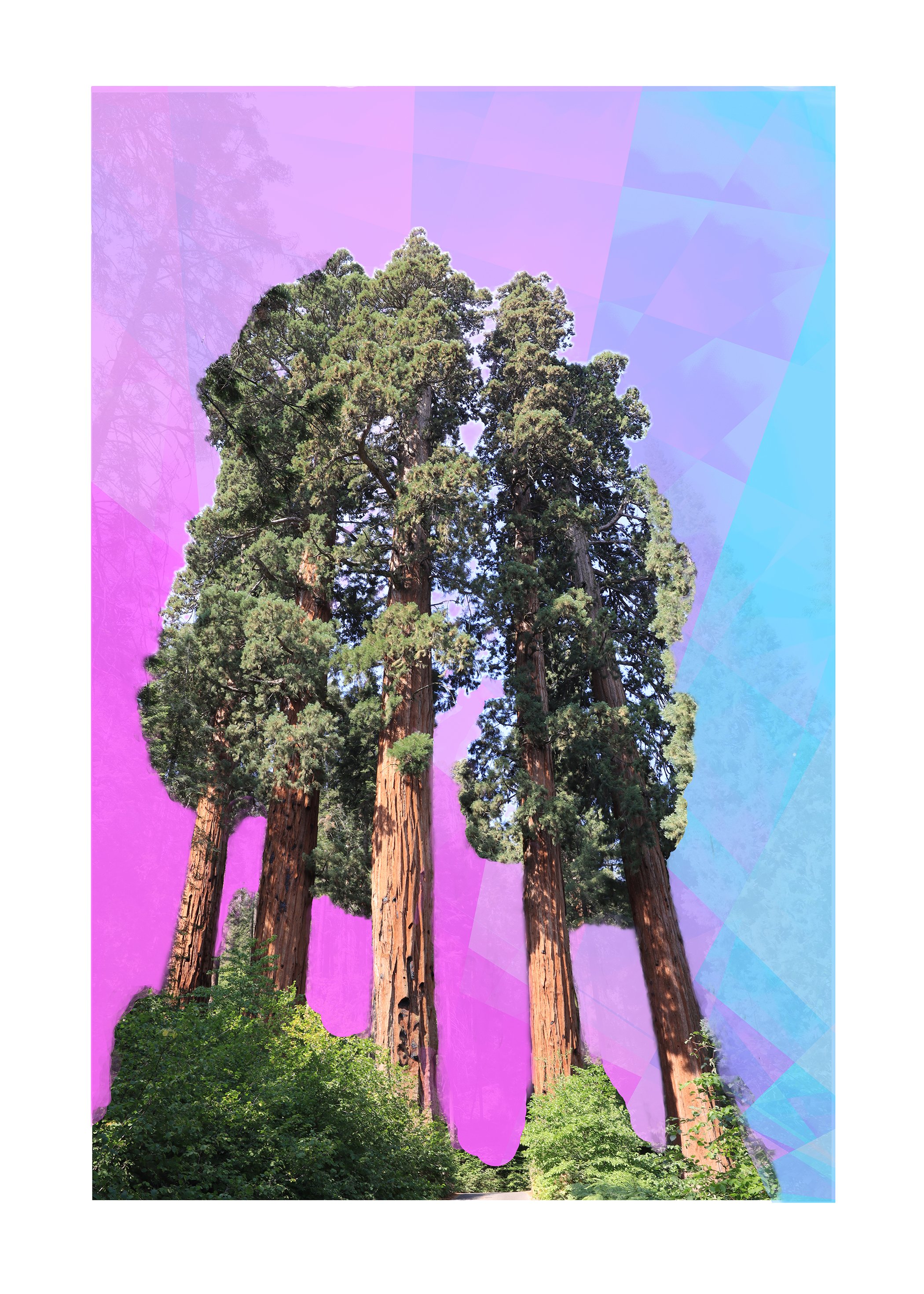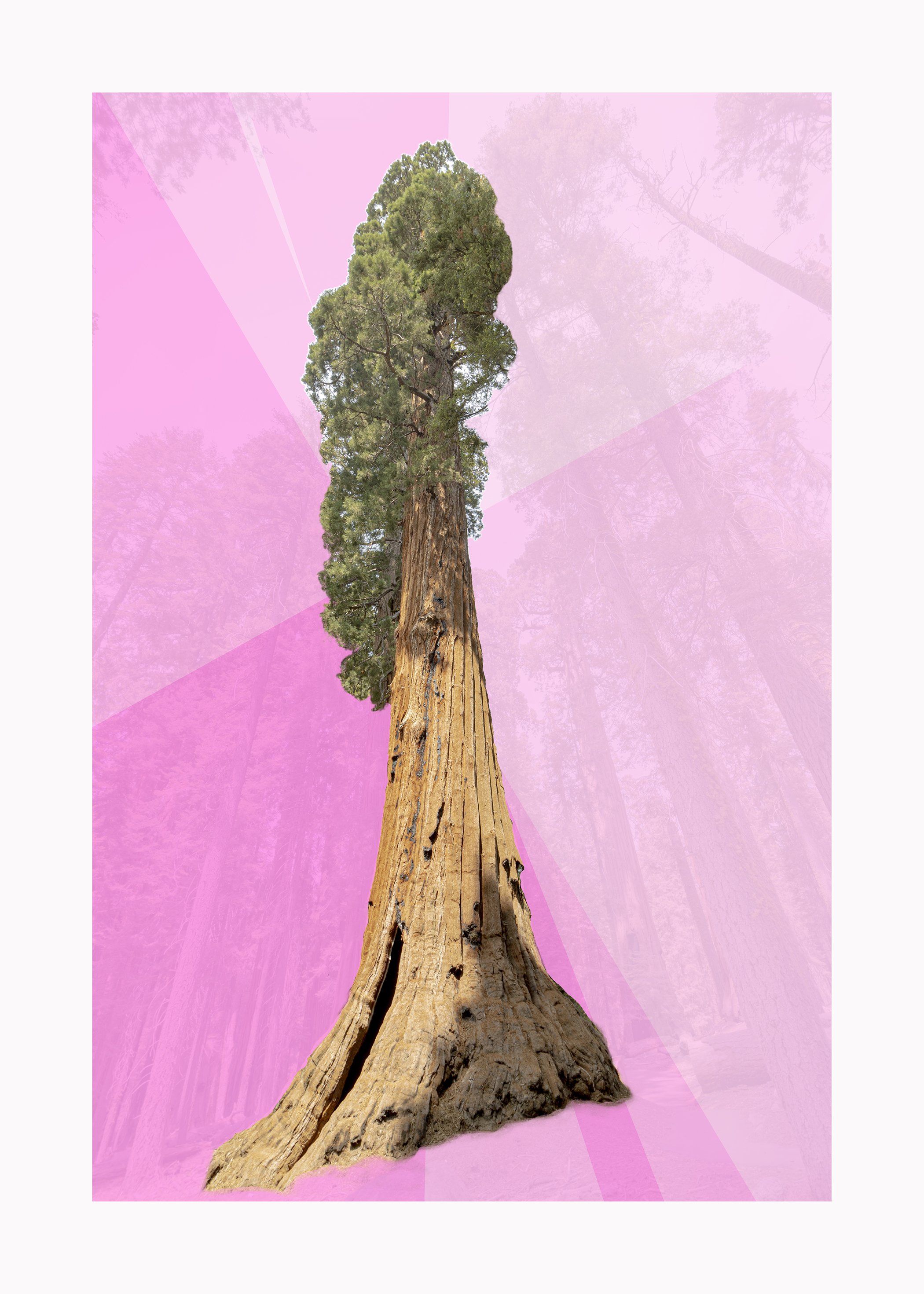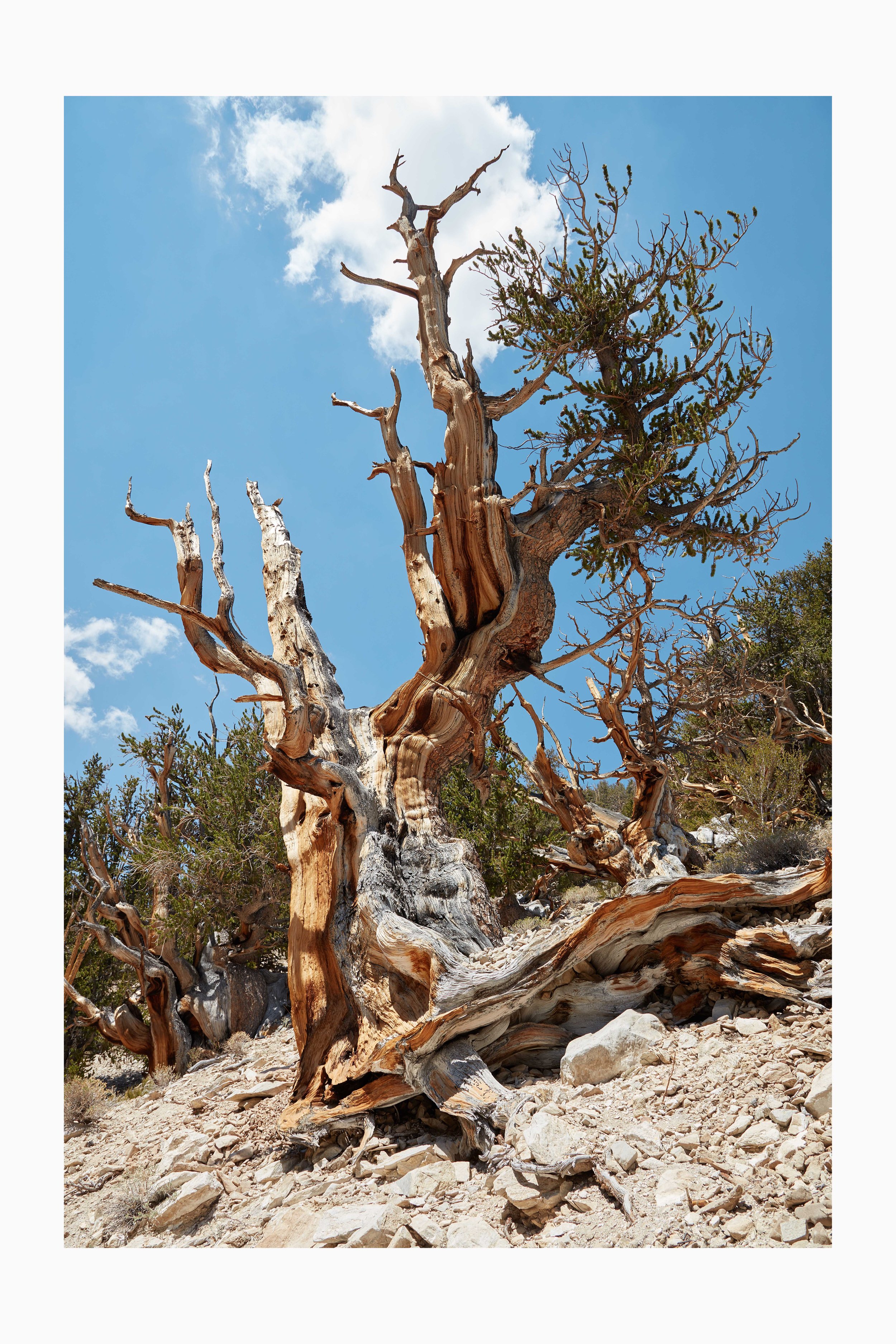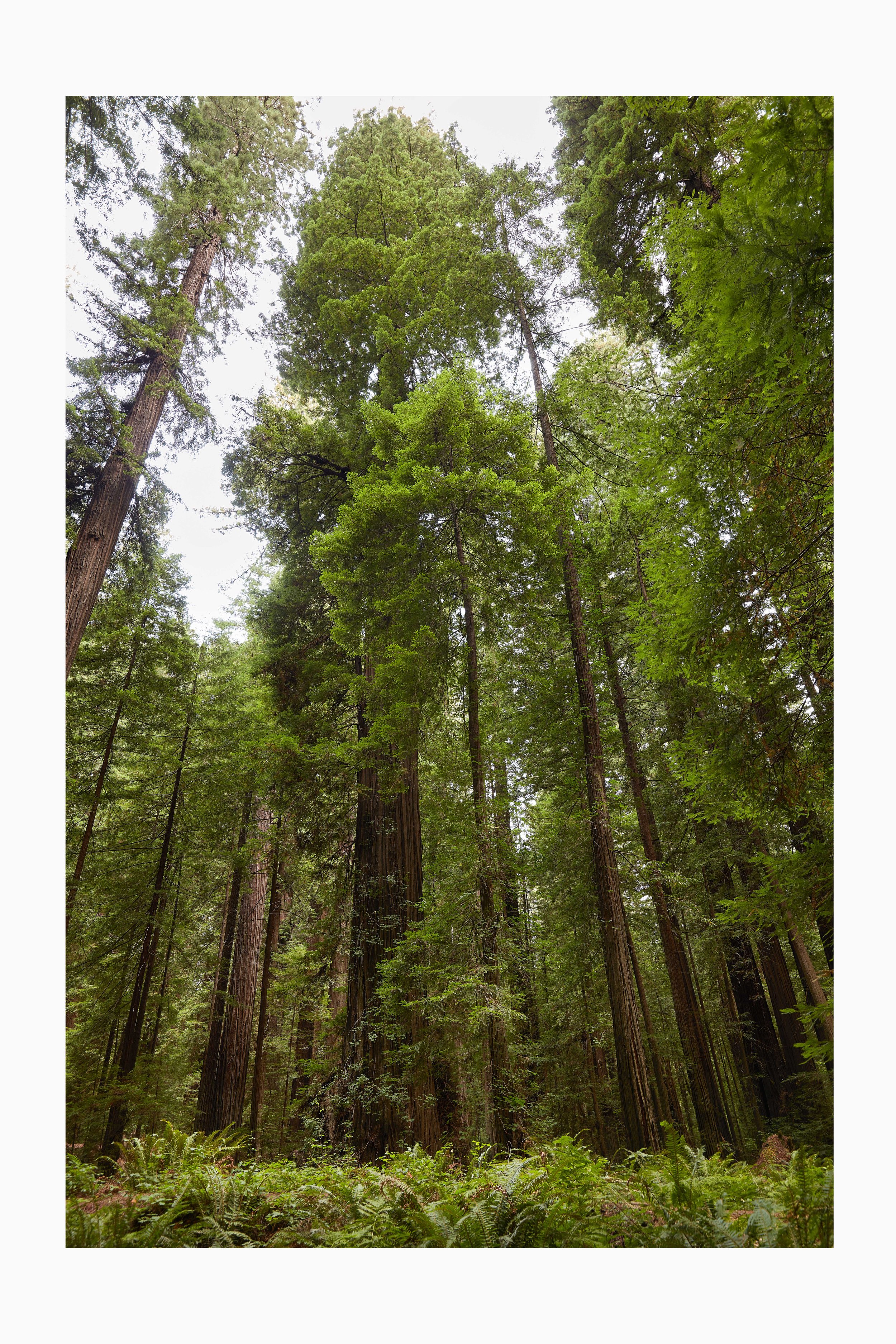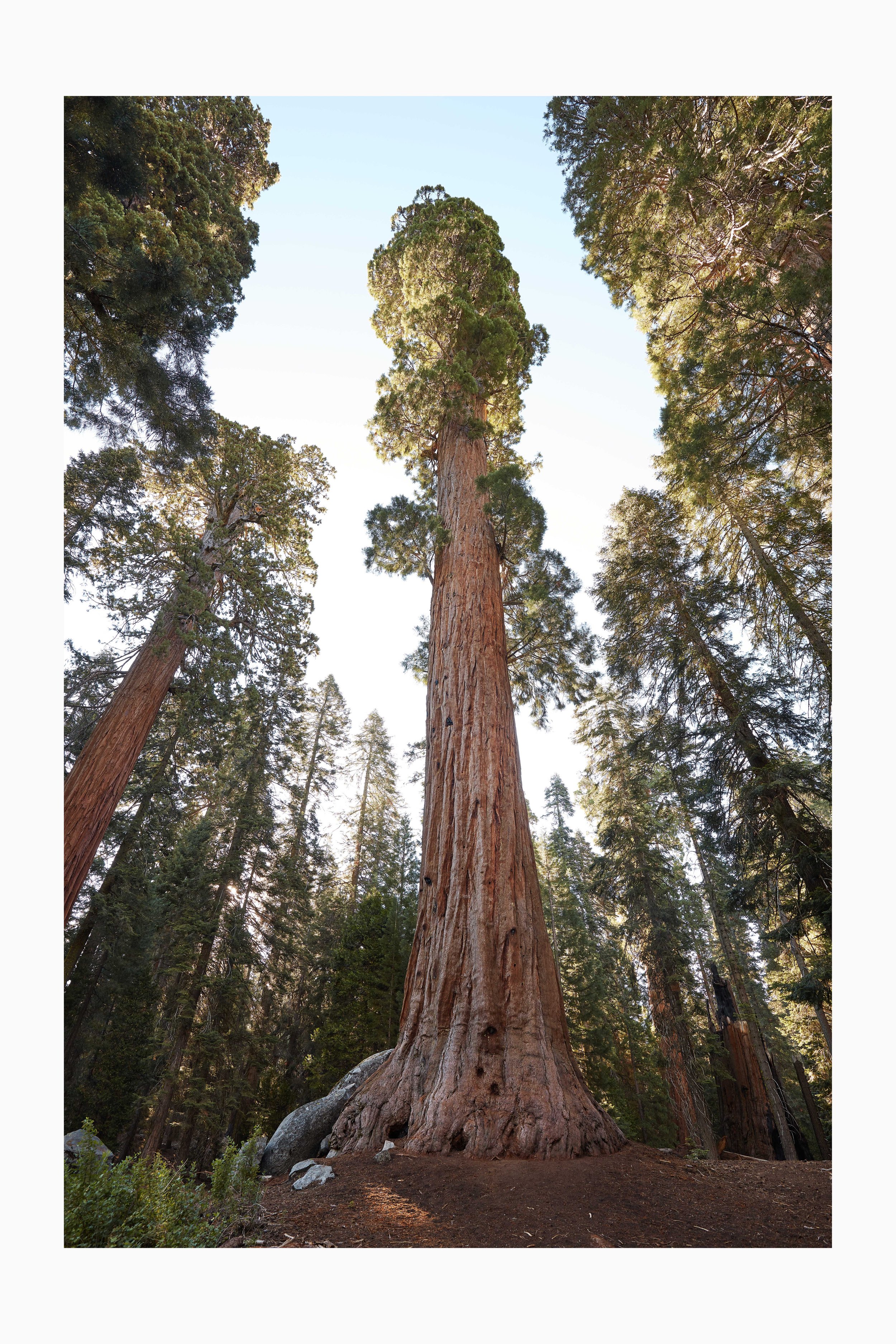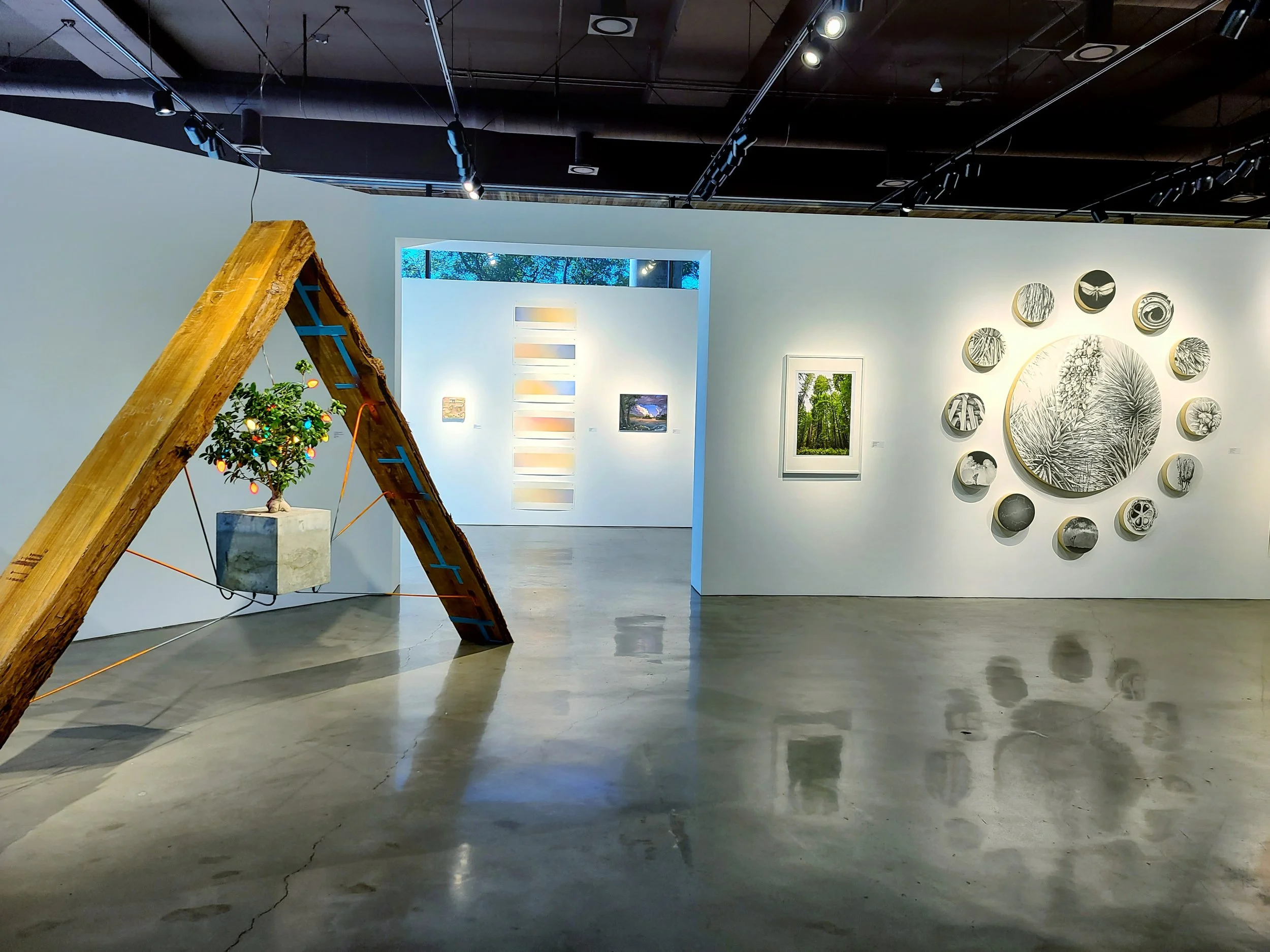Andre Woodward
Don’t Come Down
The cubes’ sculptures are deceptively simple. On the surface, they present themselves simply as a concrete cube with a tree sticking out of one side. At first glace, they appear to be a very realistic fake tree cast in a concrete block presenting a critique on modernism and maybe man vs. nature. Upon further inspection, you realize the tree is real. Then the mind goes to the imminent death of the tree. It is hard the get past that. That is until you find out how long the tree has been living in its block.
One of the trees in this exhibition has been growing a block since 2006, that’s 16 years. The tree itself was purchased as a bonsai and cast in smaller form. Between 2009 and 2012 it was heavily overwatered and grew roughly 4ft. Then in 2012 I broke open the block it was in and recast it in its current 13” cube.
These cubes are both a critique of art history and man’s quest for dominance over the earth. At the same time, they represent a state of coexistence that is beautiful. The tree has adapted to this human-imposed prison. It is surviving. But really, these trees are not supposed to live in isolation like this. So, maybe this is a critique of urbanism as well.
April Skies
Memory analog vs digital.
A tree is a physical record of its life and in the case of this old-growth redwood slab that life could have lasted up the 2,500 years. The sculpture “April Skies” is a representation of this old-growth analog memory and contemporary digital memory. The play with analog and digital memory is present in the audio track that is a digital recording of an analog record album run through and computer that is instantaneously playing back the track as it records. The result creates a wave cancelation effect that makes the original track almost unrecognizable. The audio track does retain the original track’s rhythm and melody and at points the soundwave line up to where you can briefly start the make out the original track if you know what you are listening for.
The thinking behind this work is that nature has evolved so remarkably, and the system therein is so complex we don’t truly know what we are looking at. Yet we spend most of our energy trying to replicate these systems rather than trying to understand what millions of years of evolution have perfected.
Sequoia Portraits
Over 2021 I embarked on a project to photograph some of the most intriguing Californians. These wonderful beings have lived on this land for thousands of years. Their ancestors have inhabited this beautiful state for millions of years. What you are seeing in these photographs are Portraits is one of the three species I sought to photograph in 2021. Meet the Marvelous Giant Sequoias (Sequoiadendron giganteum). My intent with these portraits is to present these majestic creatures as singular individuals with personalities and characteristics all their own.
Heaviest, Tallest, and Oldest
The Heaviest, Tallest, and Oldest living thing on earth. Year I have driven roughly 7,500 miles across California photographing the oldest, heaviest, and tallest living organisms on the planet: the Ancient Bristlecones, Giant Sequoias, and Coastal Redwoods. These photographs are meant to be seen as portraiture rather than landscape. In the coming months I hope to drive another 3,000 miles to take more photos of these beautiful trees.
Giant Sequoias are among the heaviest and tallest single organisms on earth, and Coastal Redwoods are the tallest and—like Sequoias—among the heaviest. In addition, both these species of trees are some of the oldest living things on the planet. Based on dendrochronology (or ring dating), there are living Sequoias that are 3,500 years old and Coastal Redwoods that are 2,500 years old. The oldest trees in California, though, are the Ancient Bristlecones which live in the White Mountains of the Sierra Nevada Mountain Range. The oldest known living Bristlecone tree has been dated to be over 5,000 years old. This tree was already 500 years old when the first pyramid was completed in Egypt. The Bristlecones and Sequoias were centuries old when Classic Greece was established. The Redwoods were hundreds of years old when Rome was founded.
These trees live with me in California. I carry an immense pride in sharing a home with these magnificent trees, having the opportunity to walk among them, feel their bark, and breathe their oxygen. I want you to know these trees the way I do—not as ambassadors of the ancient world, but as active citizens of our contemporary world. In short, I want you to feel reverence for these majestic beings.
Til It Shines
Last year I embarked on a photo project that unintendedly had me reexamining the motivations of my art practice over the last 20 years. After spending so much time in these beautiful Forests of California I came away with this underlying sense of guilt. Guilt for being a post-agrarian human, and the way we as an organism have to manipulate the earth to suit ourselves. I can’t help but think that if we had not cut down so many of the old-growth forests over the last 150 years, we would not be in this mess with the climate. After all these old-growth trees are colossal filters that generate their mass by filtering particles out of the air. There is also the sense of guilt for my 20 years’ worth of manipulating trees and plants as an artist. It is true I have made this work to illustrate how we as humans see nature as a resource for our own devices. But, to do that I have conducted a lot of experiments on trees. I have also devised a way to cast a living tree in concrete creating the most unnatural and possibly unpleasant living situation for the living tree to exist.
This sculpture is my first sculpture while harboring this guilt. It is made of roughly 30-year-old redwood milled into two live edge slabs. These slabs are positioned in a triangle held in place by the weight of the cube suspended inside the triangle. The overall structure mimics a masonic or other occult symbol giving an otherworldly aura to the sculpture and what it represents. The formal aspects of the work bring together cubes and triangles interwoven with free-flowing organic lines creating a Contemporary Art Nuovo Sculpture.
I love the fact that all my work in this show establishes a chronological evolution starting with the cube (the oldest body of work) at the entrance of the exhibition and ending the triangle (my newest sculpture).


